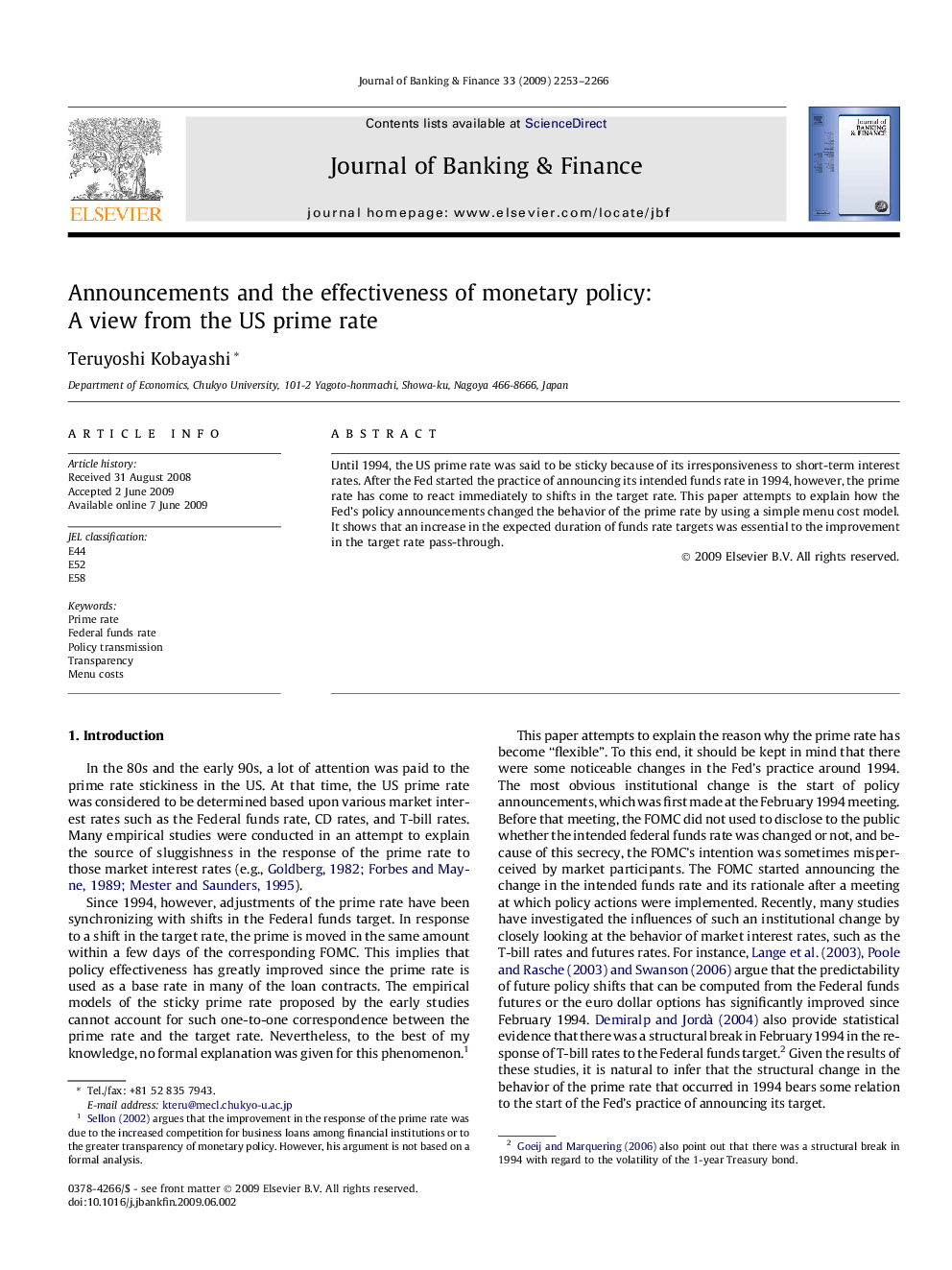| Article ID | Journal | Published Year | Pages | File Type |
|---|---|---|---|---|
| 5090358 | Journal of Banking & Finance | 2009 | 14 Pages |
Abstract
Until 1994, the US prime rate was said to be sticky because of its irresponsiveness to short-term interest rates. After the Fed started the practice of announcing its intended funds rate in 1994, however, the prime rate has come to react immediately to shifts in the target rate. This paper attempts to explain how the Fed's policy announcements changed the behavior of the prime rate by using a simple menu cost model. It shows that an increase in the expected duration of funds rate targets was essential to the improvement in the target rate pass-through.
Related Topics
Social Sciences and Humanities
Economics, Econometrics and Finance
Economics and Econometrics
Authors
Teruyoshi Kobayashi,
